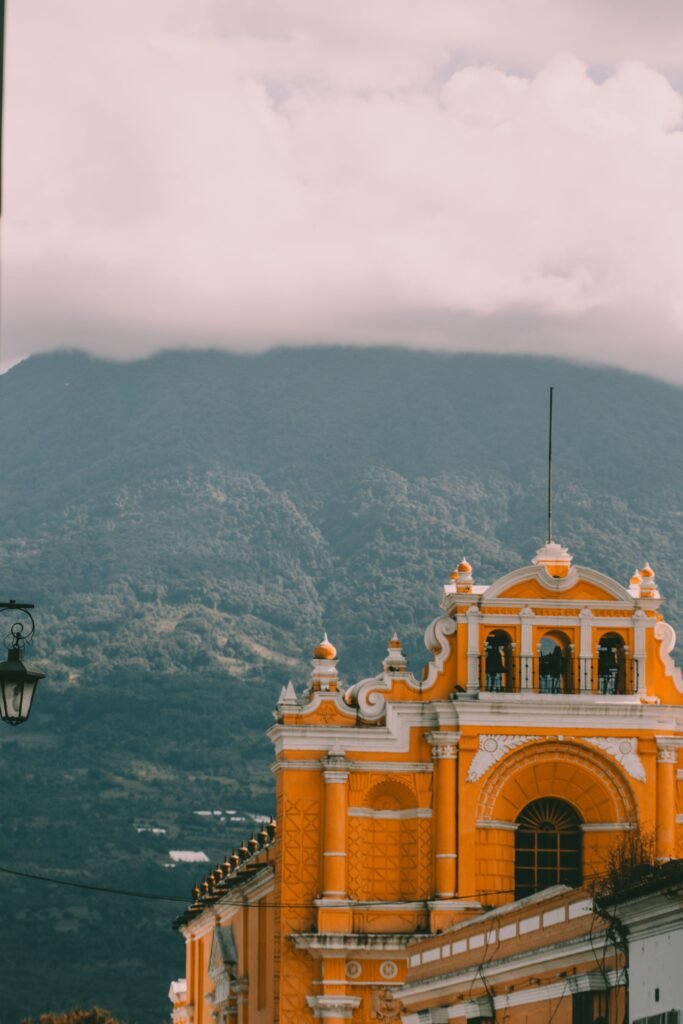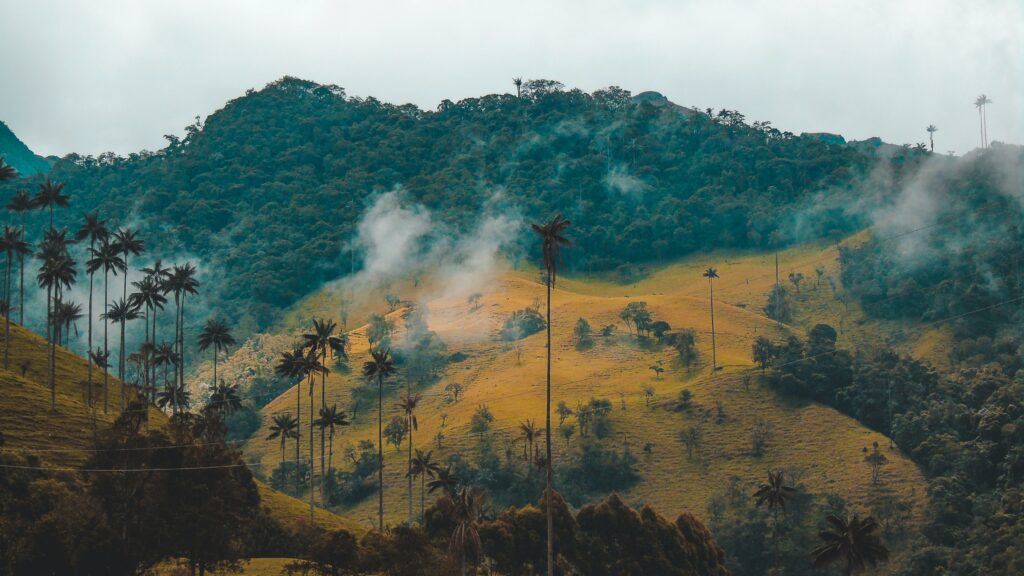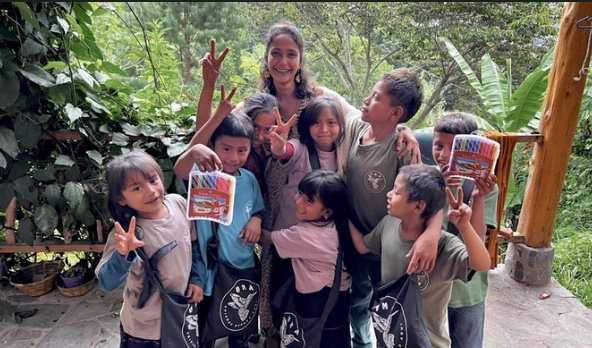Guatemala vs Panama Cultural Insights: Uncovering The Top 7 Wonders

Historical Roots of Guatemalan and Panamanian Societies
Guatemala and Panama represent a rich tapestry of cultural history, each with a complex past that includes Pre-Columbian civilizations and the transformative Spanish Conquest. In Guatemala, the legacy of the Maya is evident through their remarkable ruins and sophisticated ancient traditions. The Spanish influence merged indigenous customs with European traditions, tangible today in various cultural expressions. Panama’s history, also marked by indigenous cultures and Spanish colonization, has evolved differently due to the strategic importance of the Panama Canal, which introduced an era of global trade and multicultural influences. These historical underpinnings set the stage for each country’s unique cultural evolution.
Pre-Columbian Heritage and Spanish Conquest
The intricate histories of Guatemala and Panama are vivid narratives, each adorned with a unique pre-Columbian legacy and the transformative impact of Spanish conquest. In Guatemala, ancient civilizations like the Maya left an indelible mark, evidenced by majestic ruins such as Tikal and ceremonial sites. The intricate Mayan calendar and hieroglyphic writing exemplify a civilization of extraordinary complexity and sophistication.
Equally transformative was the era of Spanish conquest, which brought about a fusion of indigenous customs with European influences. This amalgamation is still perceptible in Guatemala’s architecture, language, and social customs. In Panama, indigenous cultures like the Guna and Embera have retained much of their traditional lifestyles, despite the Spanish arrival in the 16th century. The construction of the infamous Panama Canal fostered a distinct progression, ushering an era of international trade and cultural exchange.
Independence and Modern Cultural Evolution
The independence period marked a significant turning point for the cultural development of Guatemala and Panama, fostering distinct national identities. In Guatemala, the culture has been notably shaped by its indigenous roots, despite a history of political instability. This deep connection to ancestral traditions is displayed in day-to-day life, through colorful markets and artistry. Panama’s identity, juxtaposed with its rich biodiversity and trade significance, mirrors a more diverse and urban-centric culture. The intersection of various cultural influences has given rise to a unique cultural fabric that blends Panamanian customs with Afro-Caribbean and European elements, thus shaping its contemporary societal developments.
Traditional Celebrations: A Comparative Overview
Colorful Festivities in Guatemala
Guatemala’s calendar is replete with festivals that are a feast for the senses. The ‘Fiesta de Santo Tomás’ in Chichicastenango is a radiant display of culture, combining indigenous rituals with Catholic traditions. Dance, music, and the intriguing ‘Palo Volador’ ceremony celebrate the town’s patron saint while paying homage to ancient customs.
Another signature event is ‘Semana Santa’ in Antigua, during which the city transforms into a canvas of elaborate street carpets (alfombras) and processions. The meticulous designs made of colored sawdust and flowers showcase the syncretism of Guatemalan societal fabric.
Vibrant Holidays of Panama
In Panama, the ‘Festival de la Mejorana’ in Guararé pays tribute to Panamanian folklore and traditions. The event is a vibrant celebration of national identity, featuring traditional costumes, dances, and music.
The ‘Carnaval’ is undoubtedly the hallmark of Panamanian festivities; a massive, effervescent affair eclipsing others in its flamboyance. Parades, cumbia dances, and ‘las murgas’ (live music) envelope towns in a wave of joy and revelry, creating an exhilarating atmosphere that binds communities.
Culinary Journeys: Savoring Guatemala and Panama’s Delicacies
Distinctive Guatemalan Cuisine
Guatemalan cuisine is a sumptuous journey through flavors that are both bold and comforting. Dishes like ‘Pepian’ – a rich, spicy stew – and ‘Kak’ik’ – a traditional turkey soup – are staples imbued with the essence of Guatemalan hospitality. Ingredients such as corn, beans, and chili peppers serve as culinary pillars, echoing the land’s agricultural heritage.
Guatemala is also renowned for its coffee, a product of the fertile volcanic soil, which offers a delightful undertone to the nation’s gastronomy.
Panamanian Gastronomy: A Melting Pot of Flavors
Panama’s gastronomy is delightfully diverse; a smorgasbord reflecting an array of cultural influences. ‘Sancocho’ soup, made with chicken, ñame root, and cilantro, provides a taste of home-style Panamanian cooking. Coastal areas serve up sumptuous seafood, while Afro-Caribbean influences shine through in dishes like ‘Carimañolas’ – stuffed yuca fritters.
The use of corn, as in ‘Tortillas de Maíz’, and the incorporation of rice and beans into recipes like ‘Arroz con Pollo’, manifests the shared culinary traditions with its Central American neighbor.
Artistic Expressions and Indigenous Crafts
Guatemala’s Textile Art and Weaving Traditions
Guatemala’s weaving tradition, perfected over centuries, manifests in the vibrant colors and intricate patterns of its textiles; a tangible connection to the Maya. From the ‘huipil’, a customary blouse worn by indigenous women, to the ‘corte’, a traditional skirt, each piece is a narrative of communal identity, skillfully crafted by hand using techniques passed down through generations.
The country’s markets, like that of Panajachel, are kaleidoscopes of fabric artistry, displaying the pride and resilience of the indigenous communities against the tide of modernization.
Panama’s Mola Artwork and Craftsmanship
Panamanian craftsmanship reaches its zenith with the ‘Mola’, a hand-sewn textile art form of the Guna people. Molas are renowned for their complexity and vibrant use of color, often depicting natural themes, myths, and daily life. This art is not only a source of income for many Guna families but also a revered cultural symbol.
Panama is also recognized for its ‘sombreros pintados’, traditional painted hats with intricate patterns, weaving a narrative of skill and cultural pride.
Language and Literature: Pathways to Cultural Understanding
Guatemala and Panama are both Spanish-speaking countries, but their linguistic landscapes are textured with distinct dialects and expressions that reflect their rich histories. In Guatemala, alongside Spanish, more than twenty Mayan languages are actively spoken, signifying the enduring presence of indigenous cultures. The country’s literary heritage is robust, with notable figures such as Nobel laureate Miguel ‘ngel Asturias using their work to delve into the depths of mythology and social issues. Panama’s use of language is similarly textured, with regional vernacular elements and the prominent historical influence of English from the Canal Zone, offering a rich literary and linguistic diversity. Panamanian literature, featuring authors like Gloria Guardia, provides insight into the country’s complex social landscape and cultural transformations.
The Linguistic Landscape of Guatemala
Language in Guatemala is a tapestry of Spanish and over twenty Mayan languages, each an auditory testament to the nation’s multicultural identity. While Spanish remains the lingua franca, Mayan languages such as K’iche’ and Q’eqchi’ are spoken widely, reflecting the cultural persistence of indigenous populations.
Literature in Guatemala, with works by Nobel laureate Miguel Ángel Asturias, often explores the intersection of mythology and social commentary, enriching the cultural discourse.
Panamanian Dialects and Literary Contributors
Though Spanish is the official language of Panama, it is seasoned with expressions and idioms unique to the country. Regionalisms and the influence of English, particularly in the Panama Canal Zone, add depth to the linguistic palette.
Panama’s literature unveils stories that weave the complex social fabric, with contributions from authors like Gloria Guardia and Joaquín Beleño, capturing the spirit and transformations of Panamanian society.
Music and Dance: The Rhythms of Life in Guatemala and Panama
Music and dance profoundly embody the vibrant cultures of Guatemala and Panama, serving as vital mediums of expression and identity. In Guatemala, the Marimba stands as a cultural icon and the embodiment of the country’s rich Mayan heritage. Its music, a fusion of indigenous and Latin sounds, narrates the communal tales and traditions. Panamanian music, characterized by its lively Cumbia and soul-stirring Saloma, derives from an eclectic mix of African, Spanish, and indigenous influences. The interplay of various musical styles in Panama invites a celebration of the nation’s dynamic cultural tapestry and fosters a deep sense of communal belonging and joy.
Mayan Musical Heritage and Marimba’s Vibrancy
Guatemala’s beating heart is epitomized by the resonant tones of the Marimba. This percussion instrument, deeply rooted in Mayan culture, is the national symbol of music and enjoys a revered status. From the gentle melodies that speak of love and land to lively tunes that set the pace for communal dances, the Marimba’s presence is ubiquitous in local celebrations.
The nation’s music, comprising a rich confluence of Mayan and Latin influences, serves as an auditory chronicle of its history and people.
The Influences of Cumbia and Saloma in Panamanian Culture
Music and dance are the core of Panamanian culture, with genres like Cumbia and Saloma narrating the nation’s story through rhythm and movement. The African, Spanish, and indigenous influences in Cumbia make it an energetic dance that encapsulates Panama’s multicultural essence.
Typically accompanied by accordion, drums, and the soulful call-and-response singing of Saloma, Panamanian music is an invitation to explore the country’s rhythmic diversity and communal joy.

Religion and Spirituality: Diverse Beliefs and Practices
Guatemala’s and Panama’s religious landscapes are intricate mosaics of traditional beliefs interspersed with foreign elements. In Guatemala, Mayan spirituality with its deep connection to the earth and the cosmos, flows alongside and often intermingles with Catholic practices. This syncretism is reflected in the many festivals and everyday customs, showcasing a living tapestry of the historical confluence of beliefs. Panama’s spiritual life also echoes syncretism, with African and indigenous spiritual traditions merging with Catholicism, giving rise to festivals like ‘Festival de los Diablos y Congos’ which celebrate the country’s rich spiritual diversity. Both countries demonstrate a profound dedication to their spiritual practices, evident in the grand celebrations and the quiet daily observances of their people.
Catholicism and Mayan Religiosity in Guatemala
The spiritual landscape of Guatemala is a canvas upon which Catholic traditions and Mayan religiosity blend harmoniously. Antigua’s churches and processions exhibit Catholicism’s grandeur, while the ancient rituals observed at sacred Mayan sites like Lake Atitlán testify to the enduring indigenous beliefs.
Mayan spirituality, with its profound reverence for nature and cosmos, coexists with Christian elements, creating a unique religious syncretism witnessed in festivities and everyday life.
Spiritual Syncretism and Religious Festivities in Panama
In Panama, spirituality is characterized by a vibrant syncretism, where Catholicism has assimilated with indigenous and African-inspired beliefs. The ‘Festival de los Diablos y Congos’ captures this blend, celebrating resistance and freedom through dance, music, and costumed devils and queens.
Religious fervor is palpable during ‘la Semana Santa’, with parades and devout processions reflecting Panama’s dedication to faith, while also representing the multifaceted nature of its spirituality.
FAQ: Questions and Answers of Guatemala vs Panama culture
What is the culture like in Panama?
Panamanian culture is a vibrant tapestry woven from diverse influences: indigenous, Hispanic, African, and more. From pulsating salsa to flavorful cuisine, festivals like Carnaval and rich folkloric traditions, experience the warmth of community and the cosmopolitan vibe of Panama City, shaped by the iconic Panama Canal.
How is the economy of Guatemala compared to Panama?
Guatemala and Panama’s economies vary widely. Panama’s stability and growth stem from the Panama Canal’s revenue, developed banking, and use of USD. Guatemala relies on agriculture, facing challenges like poverty. Panama offers a more business-friendly environment.
What are the main industries in Panama’s economy?
The main industries in Panama’s economy include logistics and transportation services related to the Panama Canal, banking, insurance, container ports, tourism, and construction. The canal and logistical services surrounding it are the backbone of the economy. The Colón Free Zone also plays a significant role as the second-largest free port in the world, and Panama’s strategic geographical position has fostered the development of a well-established shipping and maritime services industry. Additionally, Panama’s tourism industry has seen growth over the years, bolstered by its beautiful landscapes, cultural diversity, and historical sites.
What are the top exports of Guatemala?
Guatemala’s top exports include agricultural products, clothing and textiles, and metals. Coffee, bananas, and sugar are among the leading agricultural export goods. The country is also a significant exporter of fresh vegetables and fruits. Textiles and garment production, under the umbrella of the maquila industry, constitute a key component of its manufacturing exports, making Guatemala an important player in the apparel sector in the Central American region. Additionally, Guatemala exports precious metals such as silver and gold, which contribute to its foreign earnings.
How does the Panama Canal influence global trade?
The Panama Canal is a critical conduit for maritime trade, connecting the Atlantic and Pacific Oceans. It significantly shortens the travel distance for shipping vessels that would otherwise have to navigate around the southern tip of South America, thereby reducing transit times and shipping costs. This efficiency upsurges the canal’s importance in global trade, especially for the transshipment of goods between the Americas, Asia, and Europe. The canal’s expansion project, completed in 2016, added new locks, accommodating larger ships and boosting its capacity, further cementing its role in the international trade framework.
What significant challenges does Guatemala’s economy face?
Guatemala’s economy faces several substantial challenges, including high levels of poverty, income inequality, and a dependence on agriculture, which makes it vulnerable to environmental and climate-related shocks. A significant portion of the workforce is engaged in the informal sector with limited access to social security and benefits. Limited educational opportunities and access to healthcare also impede economic development. Furthermore, political instability and corruption can deter foreign investment and complicate efforts to improve economic conditions. Guatemala must also deal with the economic impact of emigration, as many skilled workers and young professionals seek better opportunities abroad.
Summary of Guatemala vs Panama culture
In our journey through the cultural landscapes of Guatemala and Panama, we have witnessed a vivid tapestry woven with the threads of history, tradition, and creative expression. From the impactful roots of both societies stemming from Pre-Columbian times and Spanish conquests to their lively, modern cultural evolutions, these nations proudly display their heritage through every facet of daily life.
The exploration of traditional celebrations highlighted the joyous and colorful festivities that mark the calendars in Guatemala, contrasted by the vibrant holidays integral to Panamanian life. Each country’s culinary adventure offered a taste of their unique flavors, demonstrating Guatemala’s distinctive cuisine alongside Panama’s gastronomic diversity, which acts as a melting pot of indigenous and global influences.
Art has been a vehicle for cultural storytelling, with Guatemala’s world-renowned textile arts and weaving traditions and Panama’s intricate Mola artwork standing as testaments to the skilled craftsmanship that spans generations. Language and literature have played crucial roles in cultural understanding, revealing the rich linguistic landscape of Guatemala and the unique dialects and literary contributions of Panama.
Moving to the rhythm of each nation, music and dance embody the vital essence of Guatemalan and Panamanian culture. From the storied Mayan musical heritage and the deep resonance of Guatemala’s marimba to Panama’s vibrant cumbia and saloma beats, these art forms celebrate the vivacity of both countries.
Lastly, the diversity of religious beliefs and practices, including the blend of Catholicism and Mayan religiosity in Guatemala and the syncretic spirituality of Panama, illustrates how faith and divine devotion are interwoven into the cultural fabric of these societies.
Having delved into the myriad aspects that constitute the identity and soul of Guatemala and Panama, we see that despite distinct paths, both countries share a depth of spirit and a richness that resonates in the hearts of their people. As we reflect on these insights, it becomes evident that the cultural richness of Guatemala and Panama is not just in the grand celebrations or well-known art forms, but in the everyday lived experiences and the enduring legacy of their peoples.

Don’t know where to stay? At Eagles Nest we offer all inclusive rooms. Enjoy the included yoga classes, delicious traditional food, and breathtaking views. Book here.




